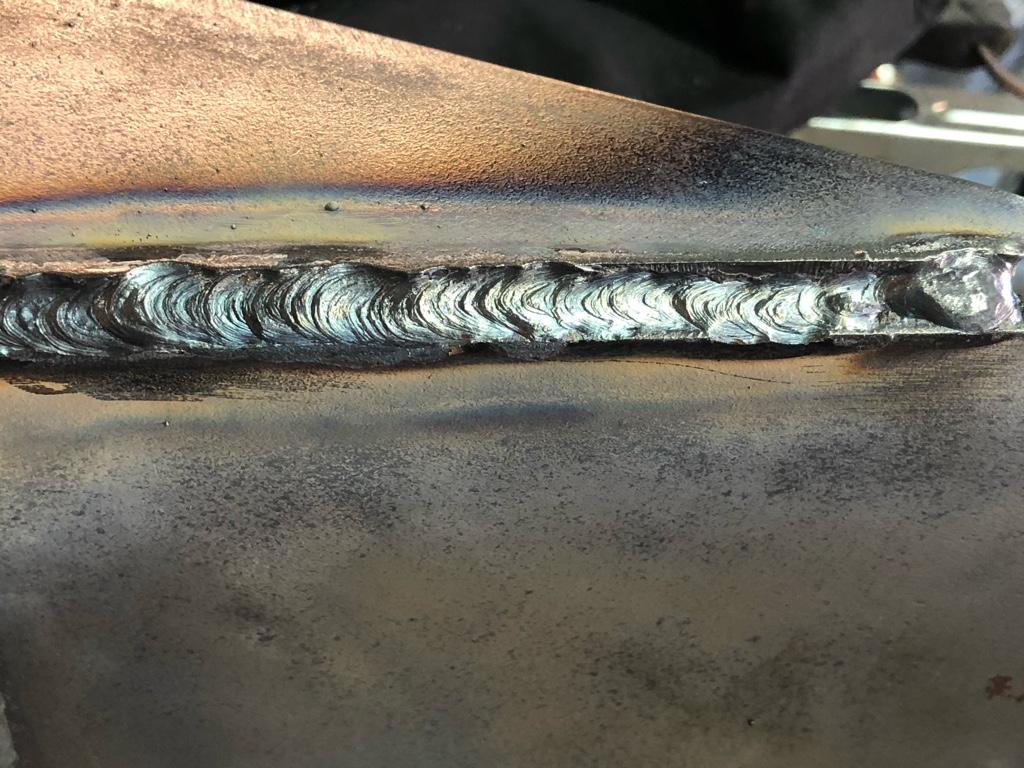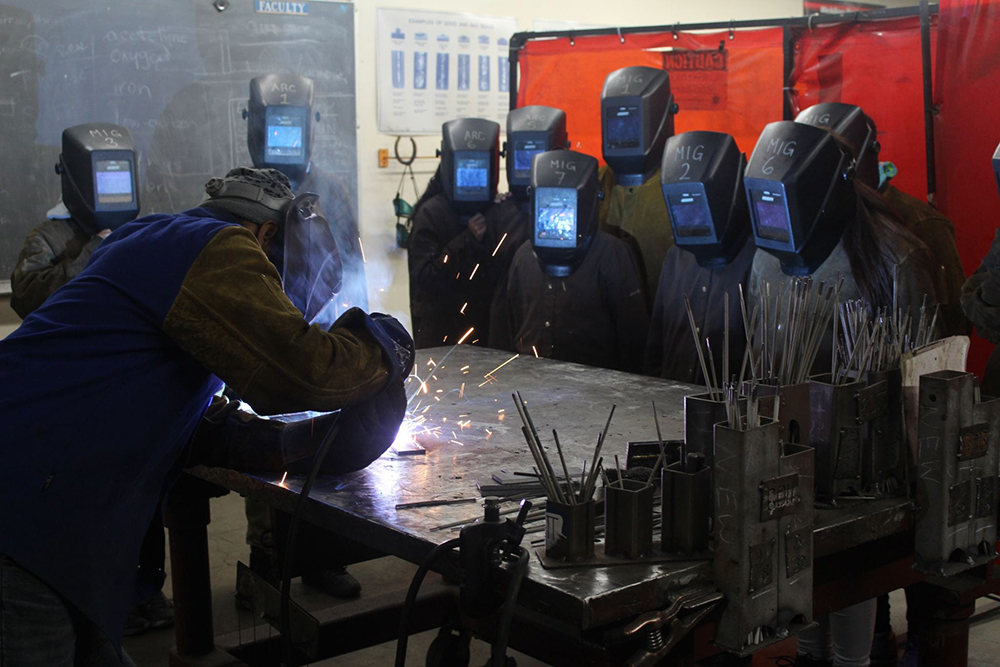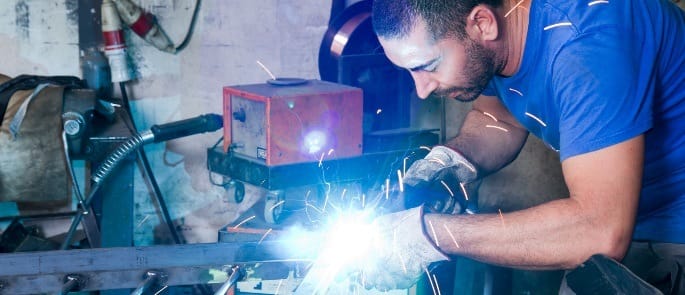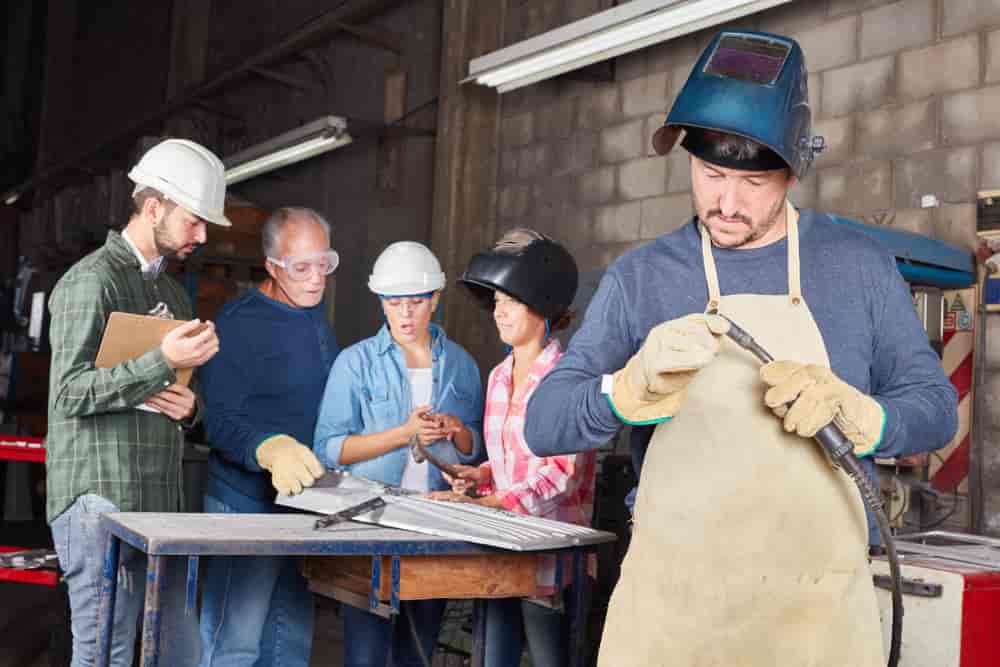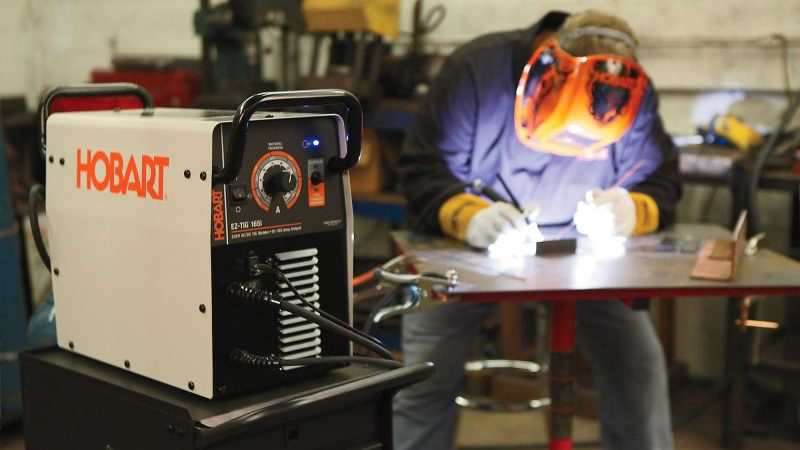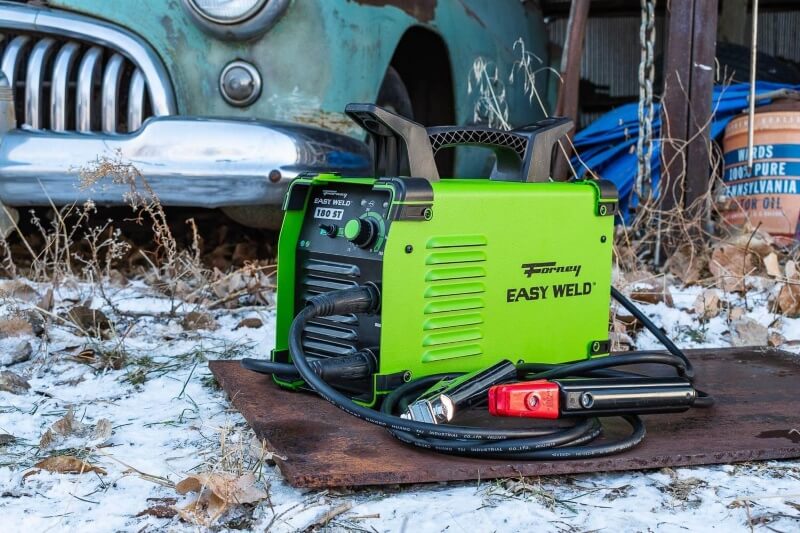

Welding is a profession of the future, and it deserves just as much attention. In fields ranging from construction to automobile manufacturing, welders use their know-how to assemble metal parts according to recognized standards.
If you are interested in being a welder, you might be asking the following questions, is welding hard, or is welding hard to learn?
Well, welding is moderately hard to very hard for most starters. It’s more of a practical profession that cannot be learned by reading a book or just watching tutorials.
However, you can acquire the necessary skills by taking online courses and practicing the techniques, attending a vocational school, and taking an internship.
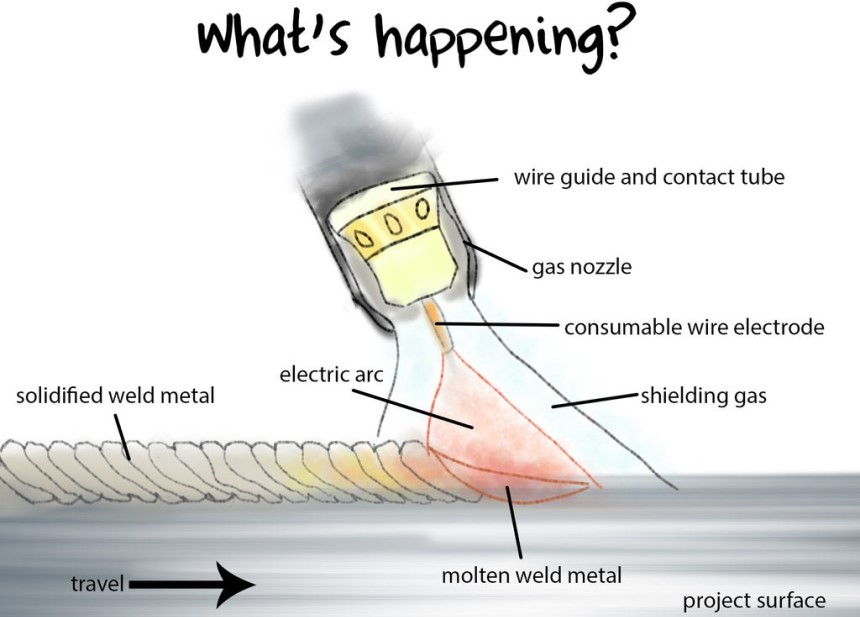
Welding machines require a source of energy (electrical, combustion, mechanical) to transform this into energy. This then allows the fusion of the filler material that is used to join two or more elements.
These machines handle a lot of energy in the form of heat to melt the filler materials. This is why the need to take into account all the necessary security measures for the use of these machines without the person running any risk.
Each welding technique meets a certain need and has a different learning curve. Depending on the metal to be welded, its thickness, and what you want to do with it, you have to adapt and choose one or the other.
Be careful, however. You have to learn in practice and by tests. Here are the different welding methods and their uses.
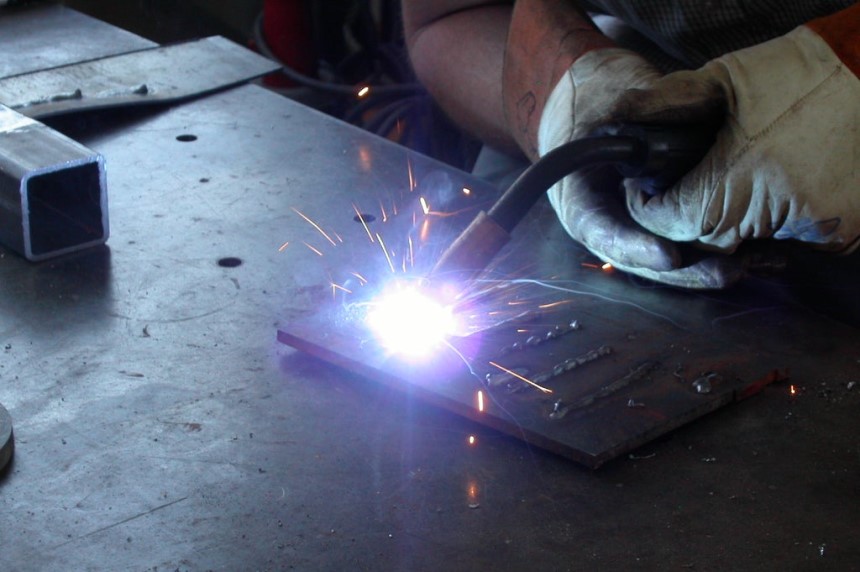
This technique consists of creating an electric arc using an electrode, which will be protected by a gas. This gives a very solid spot weld. This gas welding technique allows the welding of aluminum as well as stainless steel or iron. This is one of the easiest types of welding you can learn.
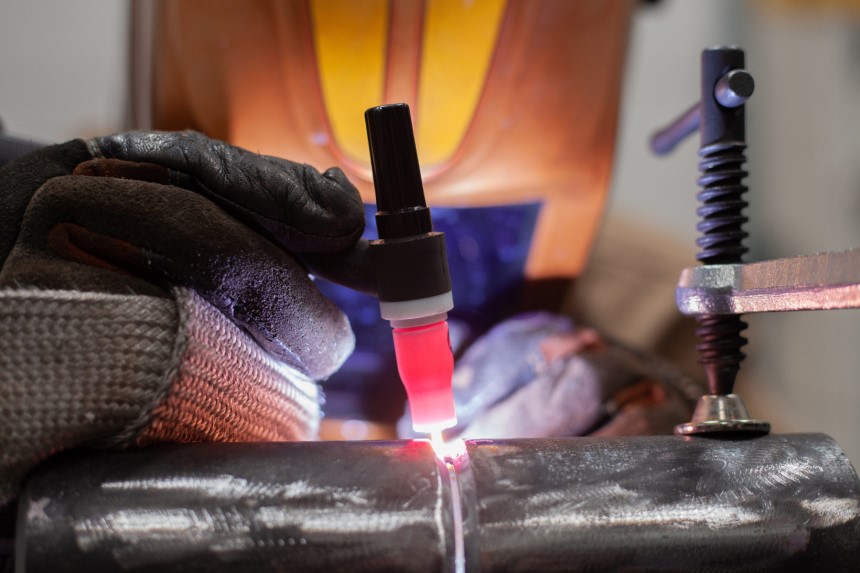
TIG welding can be very complex. It’s considered ”the Trusted Source ”How | MillerWelds” url=”https://www.millerwelds.com/resources/article-library/ten-common-tig-problems-a-visual-guide”]This visual guide will help you learn about 10 common TIG welding mistakes as well as basic tips on how to prevent these errors. to learn. So, it’s better to reserve this for when you’ve gained some experience.
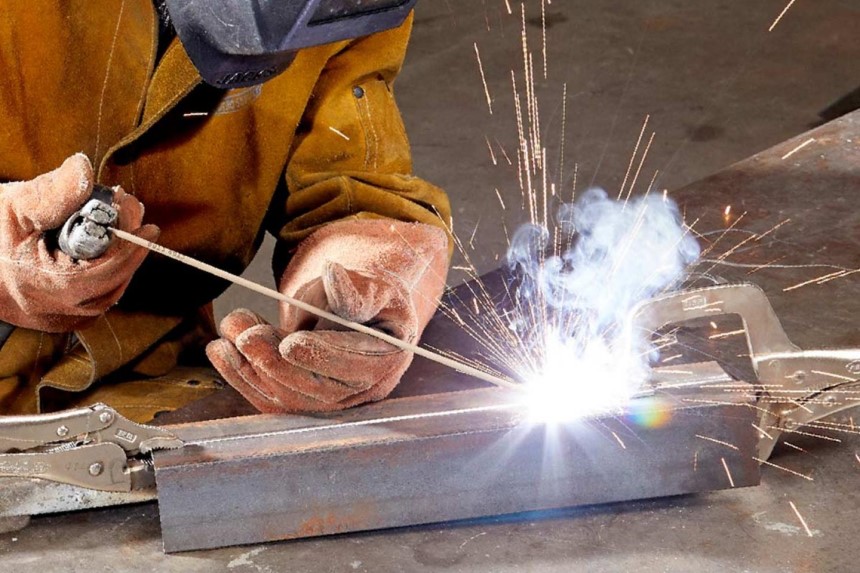
Note: Today’s welding machines are usually multi-process types; that is, you can now find a station that can weld using TIG, MIG, Flux-cored, and MMA techniques.
Welding is moderately hard to very hard for most starters. It’s more of a practical profession that cannot be learned by reading a book or just by watching tutorials.
However, welding is a really feasible thing for professionals as well as beginners, and by that, we mean that everyone can weld.
Everyone can learn to weld and to make this entry as easy as possible. But welding is often a complicated thing for beginners as there are too many technical terms.
However, you only need certain basic terms to really understand the whole thing
The video below shortly explains all the basics of welding and main welding processes.
Learning to weld starts with knowing the basic terms and functions of all welding equipment, then self-educating yourself with welding practices, tutorials, and courses, among others.
Make sure you are well equipped to start properly. You’ll need the following tools and equipment:
Please note, welding without wearing PPE (personal protective equipment) is out of the question. Welding sometimes results in small splashes of molten metal. In other words, a droplet on your skin will inevitably leave you with an unpleasant memory!
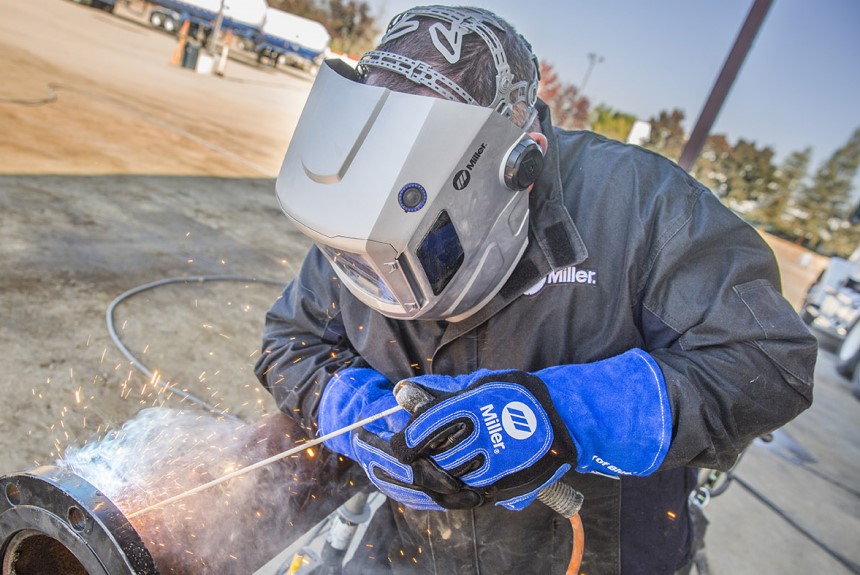 Self-education
Self-educationNext, ensure you have practical welding experience. You won’t be able to learn to weld from a book. Welding is a manual job. The best you can get from a book is introductory practical training. For example, the Larry Jeffus Welding Book introduces would-be welders to all the principles and applications of welding.
However, by engaging in an apprenticeship program or by enrolling in a specialized vocational school to acquire the appropriate skills to master metal welding.
If you don’t have any welding experience or just have the basic knowledge that you want to learn more about, start by taking a course at a technical school or training center in your area. So you will learn the necessary safety rules and welding techniques, then practice as much as possible.
Learn how to strike an electric arc and how to control your welds. You have to start with one end and the first skill to master is making spot welds to hold the pieces to be welded together without using pliers. This allows you to precisely control the intensity of the arc and the rate at which filler metal is consumed as you weld the parts. You will need a little practice and some guidance. So right off the bat, have experienced welders teach you the ropes.
Today, many industrial welding jobs are carried out with welding machines that automatically unwind the welding wire, thus simplifying the work and making it more efficient. If you are looking to gain good welding experience and get paid for your work, master this welding technique which will be among the most common you will use.
Several companies and technical schools offer on-the-job training courses, during which you will practice basic welding operations which will give you the chance to learn more. Participation in such an internship or course will allow you to increase your number of training hours and improve your skill level.
If you don’t have any work experience, the best way to start is with proper training. Several schools offer welding training programs. The same goes for adult training centers and vocational schools.
These are the safest channels for learning this profession and entering the world of work. A good training program includes job search assistance that gets you started. For those interested in the American system, the American Welding Society (AWS) Trusted Source American Welding Society American Welding Society www.aws.org maintains a database containing all the training centers available in the territory. Either way, you can search online to find training centers that are near your home.
Also in the United States, the three best-known private welding schools are Hobart Institute of Welding Technology, Tulsa Welding School, and Lincoln Welding School.
The AWS website has a dedicated scholarship page. Several unions and companies offer scholarships because many localities lack qualified welders and the organizations in question have an interest in developing this qualified workforce.
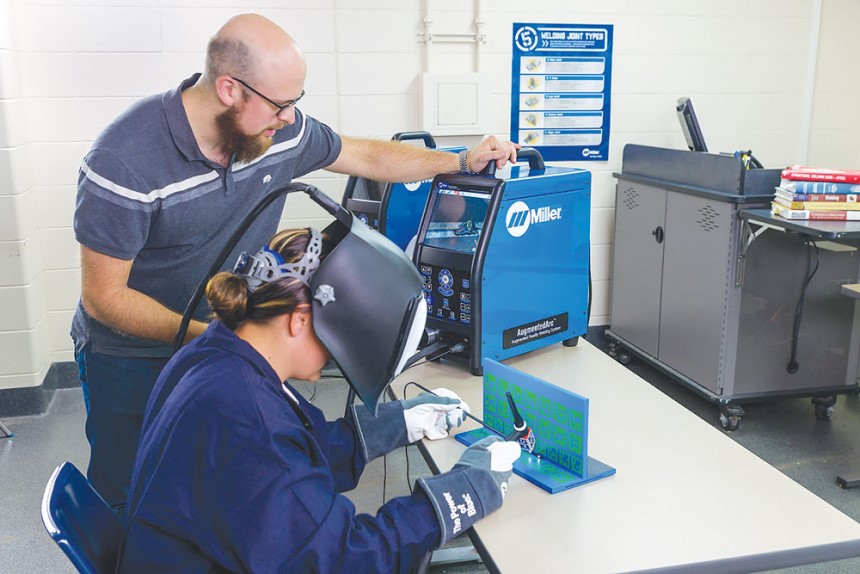 How Long Will It Take?
How Long Will It Take?Before becoming a welder, training of a certain duration should be considered. However, this duration varies depending on the type of qualification sought at the end of the training. Learning to weld can take you between seven months and two years of learning.
From the start, just weld small pieces of steel, not too thick. This is the best way to acquire more finesse and technique.
In itself, the process is not very complicated, but it requires some control and know-how. So you have to try, keep going, and start over again.
Soon you will feel ready to tackle the welding of larger parts. In addition, you will also have more control over the electrode clamp, you will know how to control the arc so that you only apply the needed weld.
To obtain a good weld, without deforming the pieces of metal to be joined and to obtain a result that is fairly simple to clean, you have to practice.
The risks inherent in the welder’s work are very high:
Therefore, you should note that collective protection is essential.
The management of explosive gases, particles, and dust requires specific equipment and precautions such as the extraction of welding fumes at the source.
UV protection for workshop personnel requires opaque welding screens of sufficient length to separate the workstations, possibly fitted with large diameter rollers to facilitate movement on uneven ground.
These welding screens prevent other workers from being hit by flying particles and harmful radiation. Non-flammable blankets can be provided and used to protect objects from weld splinters.
Finally, protection against electrocution is essential. A large number of precautions must be taken at the level of the electrical installation. This includes the connection and the maintenance of the various equipment (permanent earthing, earth cable of the metal parts). Work should not be carried out on the wet ground and keeping the welding machine in good condition is essential.
It is essential to supplement the preventive measures with personal protective equipment for the welder, which includes:
Welding can be an experience found to be simple to very hard for every starter. The welding machine you’re starting with can determine this to a greater extent.
MMA reverse welders are recommended for novice welding enthusiasts. Since the gas comes from the stream, the gas cylinder is not needed, as in a typical MIG/MAG station. MMA welders are an even better solution for beginners compared to MIG/MAG machines, where the wire feed speed is usually relatively fast.
The third type of popular equipment is TIG welding machines. How do they work? And is welding hard with these? As we mentioned in the article, welding takes place in an inert gas shield by creating an electric arc using a non-consumable electrode.
TIG stations allow you to connect even very thin elements and create high-quality welds, also artistically. However, TIG welders are not recommended for beginners. The working method is simply considered quite difficult to master. Before you start learning TIG welding, it will be good to know the basics of using MMA or MIG/MAG welding machines.
